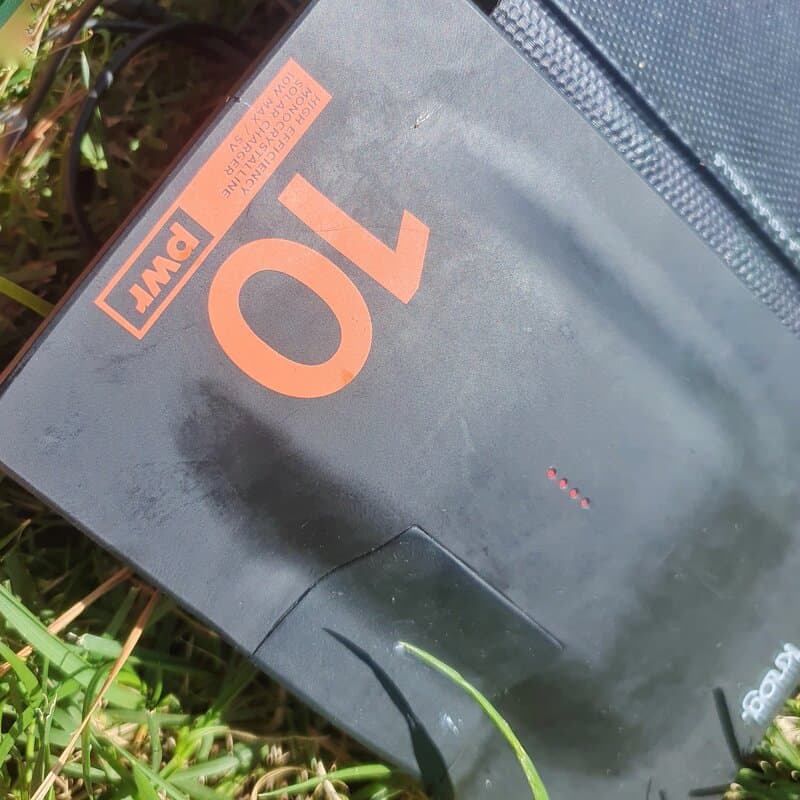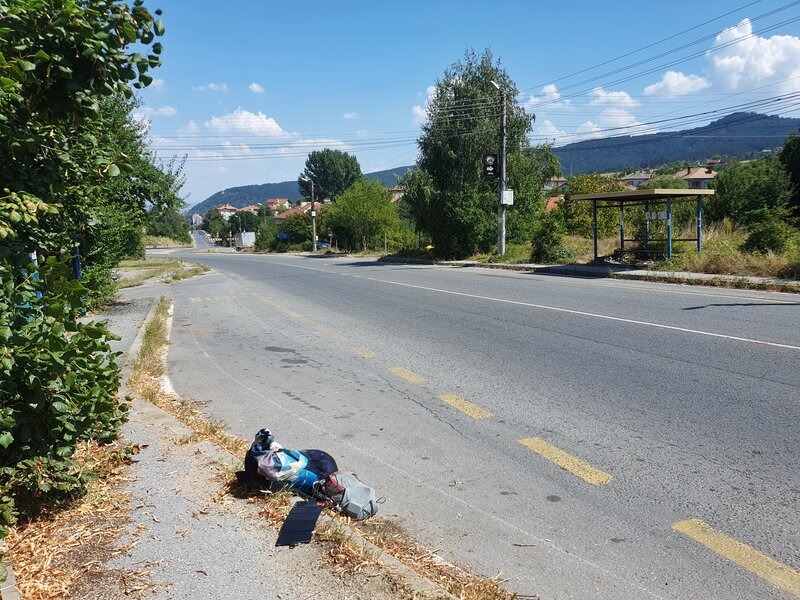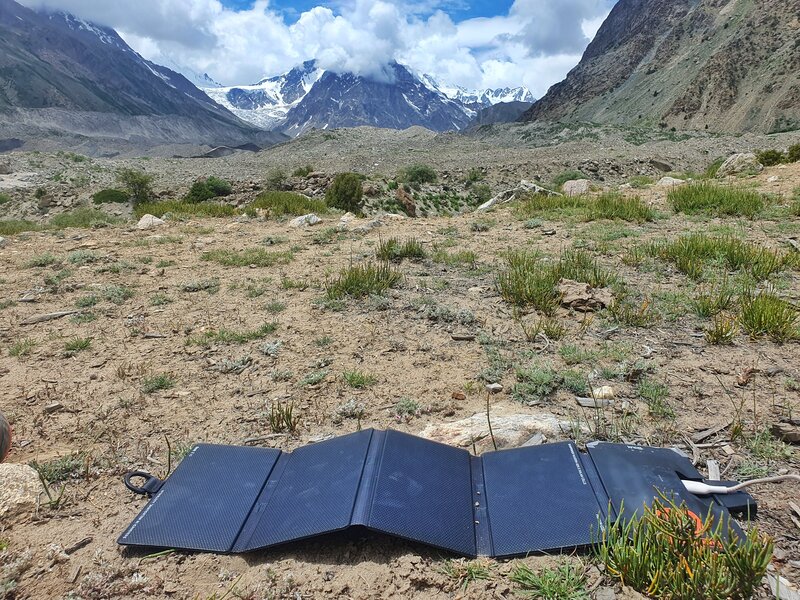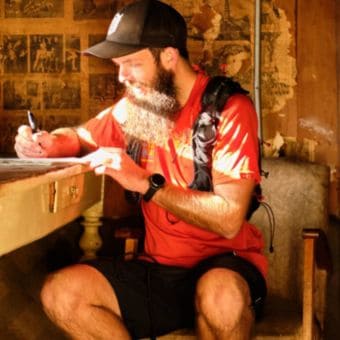Solar power is awesome. So once I learned that solar charged power banks are a thing, I wanted to get one for those times where I’ll be off the grid in the mountains for a few days at a time.
I like my Knog products (such as the Bilby Run headtorch and Knog LED bikelights), so got a PWR Solar Panel 10w from Knog.

But it turns out, on my four month backpacking trip I haven’t used it nearly as much as I though I would. Instead I’ve just been using my cheap 10000mAH Warehouse power bank most of the time.
With that said, I have made a conscious effort to use it.
Read on to find out what I do and do not like about this solar charging power bank, and why I haven’t used it as much as expected.
KNOG PWR SOLAR PANEL 10W TECH SPECS & FEATURES
- USB-A output to charge devices (there’s no internal storage)
- Sunpower Maxeon GEN 5 solar panels
- Regulated 5V output
- 450 grams
- D-Ring attachment point
- Snap magnet closure
- Water resistant when USB cover sealed (IP65)
- Coated with ETFE for enhanced durability
WHAT I LIKE ABOUT IT

SUPER EASY TO SET UP
There’s no need unclip anything. You simply lay it out flat on the ground and you’re good to go. The trickiest part is getting the panels placed right so you get the four lights flashing, maximising the charging power.
It’s a small learning curve though. Once you’re up and running, it’s simple and takes a handful of seconds.
IT’S A CONVERSATION TOPIC
When I have used it in more social situations, it’s generated a bit of discussion. Anytime solar power can be a topic, it’s a good thing.
While I’ve been sure to make people are aware of the downsides, I feel like I’m an early adopter and that soon enough there’ll be tweaks to solar power banks in the future that’ll make them a must have for more people.
IT’S SUPER DURABLE
With some new technology, durability is often a weakness. I’m not gentle with my gear, but can confirm this solar panel has stood up to everything I’ve thrown at it so far. That’s included through airports, at the bottom of my lightweight hiking pack which has been everywhere, and day packs.
WHAT I DON’T LIKE ABOUT IT
NEEDS PERFECT SUN TO FULLY CHARGE
As you can see from the GIF above, there’s three lights flashing. This was just on the ground with the sun blazing at about 11 am. The only way to get to 4-stars is to have all 4 panels receiving perfect light. You need to get the panels facing towards the sun which isn’t always easy.
ONE USB
I’ve been looking up reviews of various solar charging power banks, and most people seem to use the solar power bank to charge their regular power bank which they then charge multiple devices with. It’d be handy to have two outlets at least…this would remove some admin in checking in with how one device is charging before switching over to charge another device.
IT’S BULKY

While there are limitations in terms of building a solar powered power bank, compared to the 10000mAH power bank I carry, this one is massive. If you’re trying to be a ultralight backpacker, it’s taking up a good chunk of space and weight compared to a traditional USB rechargeable device.
WHEN I HAVE BEEN USING IT

I’ve found that I’m mostly using the power bank when I’m hitchhiking (see above) which is a fairly unique use case. When hitchhiking having a charged up phone is important so rather than draining the regular power banks charge up, I plug in my phone while waiting for a list.

I haven’t used it regularly while hiking as my smaller powerbank has sufficed. For experience though, I have taken it on some hikes and it’s handy to be able to get out while on a snack break.
OTHER POTENTIAL USE CASES
On this trip I’ve been going offline for no more than two nights at a time and during the day time I’ve been pretty much always active and needed the phone.
This would be great if you were:
Out fishing: You’re normally out on the boat in sunny conditions, so you can easily maximise the power of the sun here.
Camping at a regular spot: If you’re more of a chilled out camper by the beach, who enjoys reading books and the like, then you can be charging things throughout the day if you’ve got a base.
Thru-hikers: When you start getting to the point where you’re regularly disconnect for 3+ nights, the PWR Solar Panel 10W by Knog will be better than most powerbanks. Though if you’ve got some bad weather, you could still be out of luck.
Bikepacking: I think you could set it up on your bike so that you can charge your devices on the go which would be cool. Especially for a
So yes, there are a lot of use cases for the Knog PWR Solar Panel 10W. If you fit one of these scenarios, then you might find the addition of a solar power bank to your equipment will be handy.
WHERE TO BUY THE PWR SOLAR PANEL 10W REVIEW
I got mine from Macpac Australia (not available in NZ Macpac). You can also get one from:
- The official Knog website (you often get some good bonuses via the website)
- Tradeinn.com
And there we go. My review of the PWR Solar Panel 10W from Knog. I felt like this wasn’t a glowing review, but I think if you’re using it for a specific purpose, as mentioned above, you’ll love it.
If you have any questions/comments about the Knog PWR Solar Panel 10w, leave a message below or email jub@churnewzealand.com.
Chur.
If you gancy, I’ve written a host of gear reviews that are great for hiking.

Hey, it’s Jub here. I’m the guy behind Chur New Zealand, helping you have the best time hiking, trekking, walking…whatever you want to call it…in NZ. I’m based in Queenstown and am always out and about exploring trails, old & new. If you have any questions, reach out.
